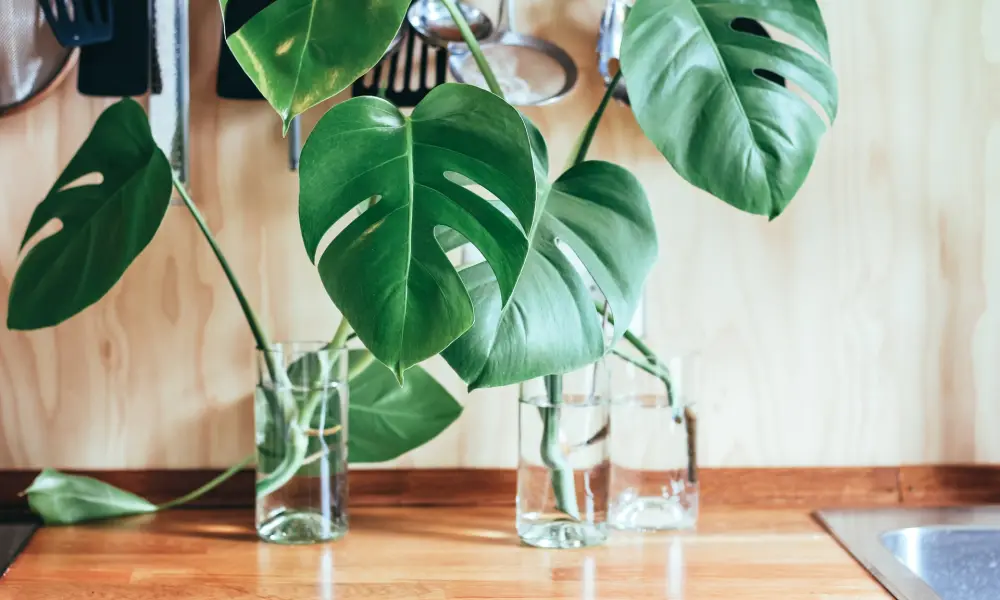Monstera plants have become one of the most popular choices for indoor gardening enthusiasts. With their striking, fenestrated leaves and relatively low-maintenance care requirements, these tropical plants can instantly elevate any living space. Whether you’re a seasoned plant parent or a beginner, Monstera plants are a perfect addition to your indoor garden.
Why Monstera is a Must-Have Plant

1. Aesthetic Appeal
Monsteras are known for their large, glossy, split leaves that bring a touch of the tropics into your home. Their unique foliage makes them a focal point in any room, adding a stylish and modern vibe to your décor.
2. Air-Purifying Benefits
Like many houseplants, Monsteras help improve air quality by filtering out toxins and increasing oxygen levels, making them a great choice for a healthier home environment.
3. Easy to Care For
Monsteras are low-maintenance plants that thrive with minimal effort. As long as they receive the right balance of light, water, and humidity, they will grow beautifully indoors.
How to Care for Your Monstera

1. Light Requirements
Monsteras prefer bright, indirect light but can tolerate some low-light conditions. However, placing them in too much direct sunlight can scorch their leaves.
2. Watering Schedule
Water your Monstera when the top 1-2 inches of soil feel dry. Overwatering can lead to root rot, so ensure proper drainage to keep the plant healthy.
3. Humidity & Temperature
Since Monsteras originate from tropical regions, they thrive in humid conditions. If your home is dry, consider misting the leaves or using a humidifier. Ideal temperatures range between 65-85°F (18-29°C).
4. Soil & Potting
A well-draining soil mix with peat moss, perlite, and orchid bark is ideal for Monsteras. Repotting every 1-2 years helps maintain healthy root growth.
5. Fertilizing
Feed your Monstera with a balanced liquid fertilizer every 4-6 weeks during the growing season (spring and summer). Reduce feeding in fall and winter when growth slows.
Common Monstera Issues & Solutions
- Yellowing Leaves: Usually a sign of overwatering—allow the soil to dry out more between waterings.
- Brown Leaf Edges: Indicates low humidity—try misting or using a humidity tray.
- Leggy Growth: Move your plant to a brighter location to encourage fuller growth.
- Pest Infestations: Treat common pests like spider mites and mealybugs with insecticidal soap or neem oil.
Also Read : What Are The Most Common Monstera Problems And How To Solve Them?
Conclusion
A Monstera plant is an excellent choice for anyone looking to add a trendy, stylish, and easy-to-care-for plant to their indoor garden. With proper light, watering, and humidity, your Monstera will flourish and enhance the aesthetic of your home.
FAQs
1. Can I grow Monstera in low light?
Yes, but growth may be slower. Bright, indirect light is ideal.
2. How often should I water my Monstera?
Water when the top 1-2 inches of soil feel dry, typically once a week.
3. Is Monstera toxic to pets?
Yes, Monsteras are toxic to cats and dogs if ingested.
4. Why are my Monstera’s leaves turning yellow?
Overwatering is the most common cause. Check for proper drainage.
5. How can I make my Monstera grow bigger leaves?
Provide bright, indirect light, high humidity, and a support structure like a moss pole.

